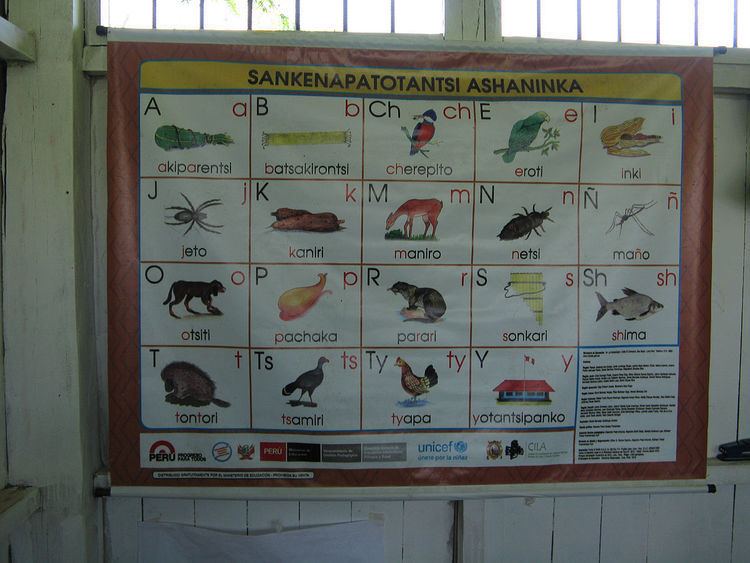Native to Perú Native speakers 26,000-96,000 (2016) Glottolog asha1243 | Ethnicity Asháninka people ISO 639-3 cni | |
 | ||
Language family Arawakan
Southern
Campa
Asháninka | ||
General Information
Asháninka , is a language from the Arawakan family. Sometimes referred to as Campa , although this characterization has a negative underlying connotation. The people who speak this language call the deep rainforests in Peru their home. Located around the coordinates of 8°23′S 74°31′W (Pucallpa, Peru) 9.3070° S, 74.4430° W (Iparia, Peru) 9.2796° S, 76.3960° W (Monzon, Peru), the people continue to survive among the shadows from modern civilization. This is echoed by low literacy and writing rates. Despite this those that speak Asháninka have shown resilience, and have not needed to develop these skills.
Contents
History
The language has also been called both Asháninca and Campa; the latter of which is considered by the Asháninka to be offensive, as it derives from the Quechua word thampa, meaning ragged and dirty. Like all languages that have a predominance in any particular region of Perú, Asháninka is an official language in the area in which it is spoken, as provided by the Constitution. Literacy rates range from 10% to 30%, compared to 15% to 25% literacy for the second language, Spanish.
Lineage
The Campa (or Pre-Andean) group of the Maipurean language family includes what have been called Asháninka, Gran Pajonal Campa, Ashéninka, Axaninca, Machiguenga, and Nomatsiguenga. As these are all very closely related linguistic systems, the decision to call them dialects of a single language or different languages rests on social and political considerations rather than linguistic similarity or difference, as in so many other places in the world. Attempts to unify the varieties with one written standard have not been successful.
Threats
This language can be categorized as vulnerable for a multitude of reasons. South America has been a target for logging and other deforestation efforts, that are oftentimes illegal. Those that speak Asháninka call the historically dense rainforests of Peru their home, and live off this land. This habitat faces a moderate threat from logging and other destructive practices by outside forces.
